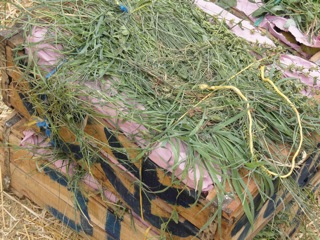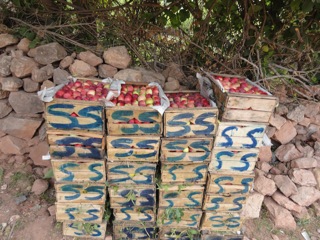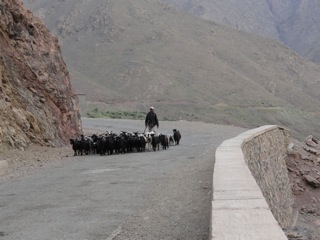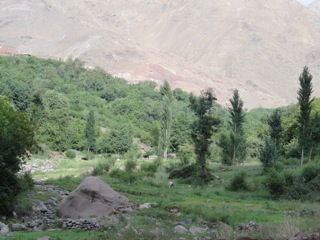I was so delighted to discover, upon closer inspection, that what at first glance simply looked like scrubby vegetation in many of the valleys, was in fact intense cultivation by the Berber villagers. There was not an inch of waste, and I can only imagine how it must look in the spring time, for what you see here is a combination of apple and pear, quince and apricot, peach, greengage and olive.
The fruit trees are surprisingly interspersed with a tunnel here, a wigwam there, for tomatoes or beans, and patches of lettuce; sugar cane for fencing, little ditches for irrigation and low walls, with patches of grass for what seemed to be the evening grazing time for the family cow, goat, donkey, accompanied by a gaggle of children playing in the pink-washed light.

During the day, crate loads of fruit are stacked ready for market, all tied up with grass on top to keep them cool.

And still, donkeys do much of the leg work, while shepherds can be seen moving their flocks of sheep and goats across the landscape.

The lasting impression is of an industrious culture…..a hard, but self-sufficient life, a simple life….punctuated by the regular call to prayer echoing across the land….

